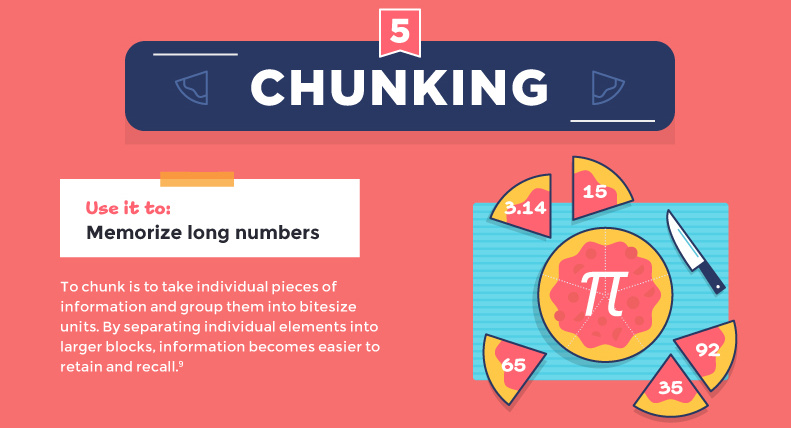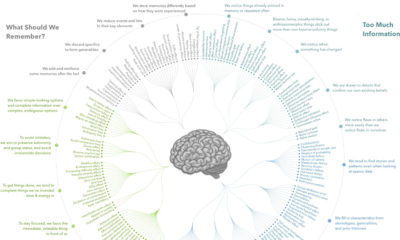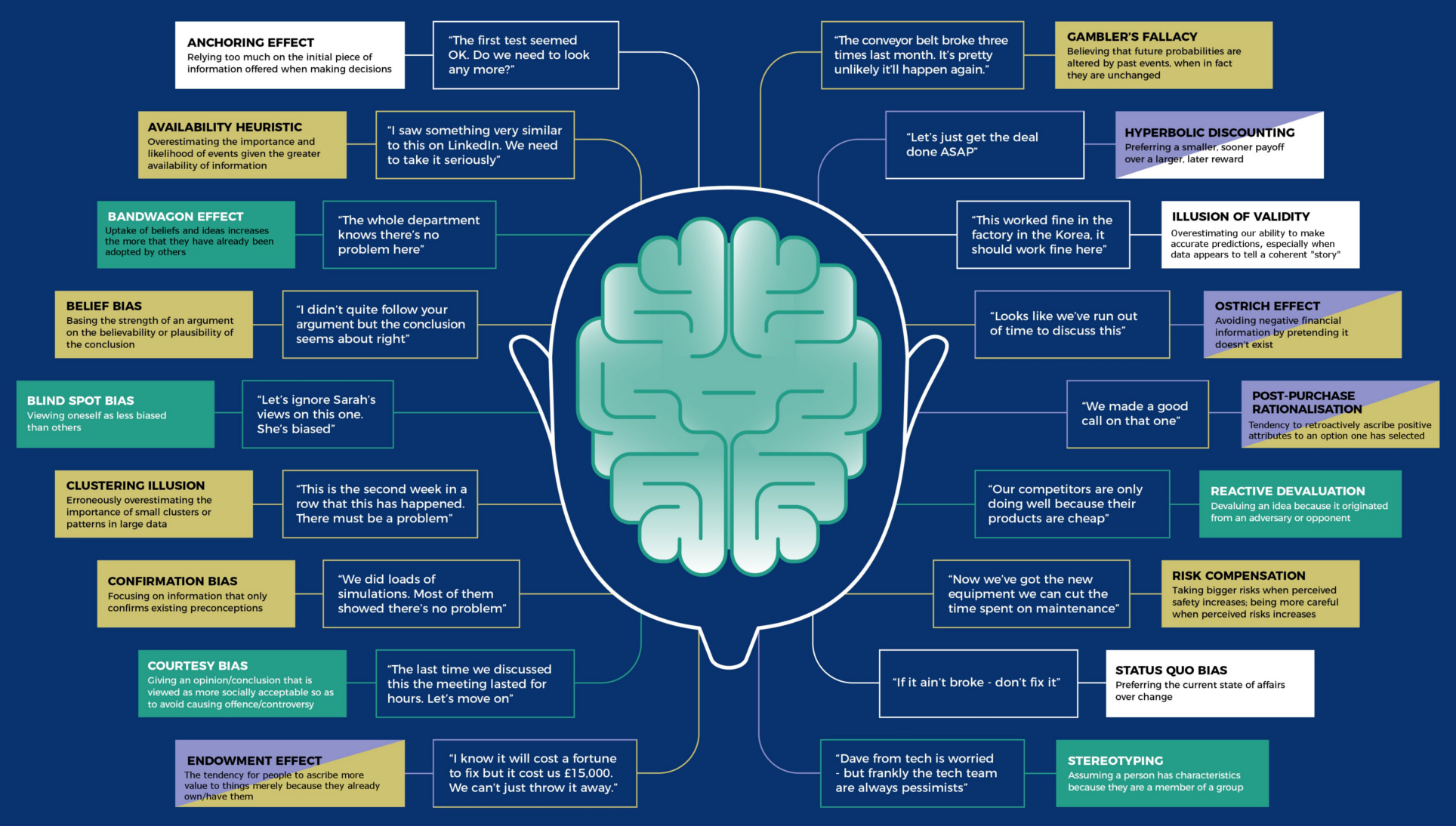Misc
7 Techniques to Help Improve Your Memory
Smartphones and the internet have changed just about everything, including our brains.
With limitless information at our fingertips, it’s no surprise that our ability to store and recall information has begun to atrophy. This mental reliance on technology is often referred to as the Google Effect.
A recent report suggested that 50% of people make no effort to recall information or seek answers from those around them before searching online. Also, two-thirds of consumers say that by letting their devices do the mental legwork, it enables them to achieve more.
How to Remember Anything
If devices are so good at storing our information and answering questions, why bother trying to remember anything at all? Experts warn that by not actively recalling information, we’re dooming ourselves to a future with fewer long-term memories and more difficulty retaining information in the short term.
Today’s infographic, from QuidCorner, lists some practical techniques to help you reclaim your short-term memory.

Whether you’re learning a new language or just trying to remember the access code to your office door, there are a few tricks that can help you more effectively remember information.
Memorization Techniques
LOCI
For more demanding memory tasks like speeches, visualize portions of information along a path you know well (e.g. the rooms of your home). This technique uses your navigation and spatial memory skills to help you recall pieces of information in a linear way.
LINKING
One technique that can help you memorize lists is called linking, or visualization and association. Linking plays to our natural inclination for understanding the world through storytelling. By mentally linking line items to one another in a creative way, you’ll be more likely to remember than if you simply tried to memorize the list.
CHUNKING
More complex pieces of information – long numbers, for example – are easier to remember when we break them into pieces.
A familiar example of “chunking” is the way telephone numbers are formatted. In the 1950s, Bell Laboratories teamed up with professor George A. Miller of Harvard University to gain insight into how we encode information into our long-term memory. In short, Miller’s research determined that the (555) 555-5555 format for displaying phone numbers was the most effective at allowing our brains to store contact information.
By organizing [information] into several dimensions and successively into a sequence or chunks, we manage to break (or at least stretch) this informational bottleneck.
-George A. Miller
A key takeaway to remember
Many of the techniques described above suggest triggering other parts of your brain to help form stronger memories. In this age of digital distraction, simply repeating information a few times is no match for mental visualization and adding meaningful context to information.
Remember that, and you’ll be able to remember almost anything.
Misc
How Hard Is It to Get Into an Ivy League School?
We detail the admission rates and average annual cost for Ivy League schools, as well as the median SAT scores required to be accepted.

How Hard Is It to Get Into an Ivy League School?
This was originally posted on our Voronoi app. Download the app for free on iOS or Android and discover incredible data-driven charts from a variety of trusted sources.
Ivy League institutions are renowned worldwide for their academic excellence and long-standing traditions. But how hard is it to get into one of the top universities in the U.S.?
In this graphic, we detail the admission rates and average annual cost for Ivy League schools, as well as the median SAT scores required to be accepted. The data comes from the National Center for Education Statistics and was compiled by 24/7 Wall St.
Note that “average annual cost” represents the net price a student pays after subtracting the average value of grants and/or scholarships received.
Harvard is the Most Selective
The SAT is a standardized test commonly used for college admissions in the United States. It’s taken by high school juniors and seniors to assess their readiness for college-level academic work.
When comparing SAT scores, Harvard and Dartmouth are among the most challenging universities to gain admission to. The median SAT scores for their students are 760 for reading and writing and 790 for math. Still, Harvard has half the admission rate (3.2%) compared to Dartmouth (6.4%).
| School | Admission rate (%) | SAT Score: Reading & Writing | SAT Score: Math | Avg Annual Cost* |
|---|---|---|---|---|
| Harvard University | 3.2 | 760 | 790 | $13,259 |
| Columbia University | 3.9 | 750 | 780 | $12,836 |
| Yale University | 4.6 | 760 | 780 | $16,341 |
| Brown University | 5.1 | 760 | 780 | $26,308 |
| Princeton University | 5.7 | 760 | 780 | $11,080 |
| Dartmouth College | 6.4 | 760 | 790 | $33,023 |
| University of Pennsylvania | 6.5 | 750 | 790 | $14,851 |
| Cornell University | 7.5 | 750 | 780 | $29,011 |
*Costs after receiving federal financial aid.
Additionally, Dartmouth has the highest average annual cost at $33,000. Princeton has the lowest at $11,100.
While student debt has surged in the United States in recent years, hitting $1.73 trillion in 2023, the worth of obtaining a degree from any of the schools listed surpasses mere academics. This is evidenced by the substantial incomes earned by former students.
Harvard grads, for example, have the highest average starting salary in the country, at $91,700.
-

 Green2 weeks ago
Green2 weeks agoRanked: Top Countries by Total Forest Loss Since 2001
-

 Travel1 week ago
Travel1 week agoRanked: The World’s Top Flight Routes, by Revenue
-

 Technology1 week ago
Technology1 week agoRanked: Semiconductor Companies by Industry Revenue Share
-

 Money2 weeks ago
Money2 weeks agoWhich States Have the Highest Minimum Wage in America?
-

 Real Estate2 weeks ago
Real Estate2 weeks agoRanked: The Most Valuable Housing Markets in America
-

 Markets2 weeks ago
Markets2 weeks agoCharted: Big Four Market Share by S&P 500 Audits
-

 AI2 weeks ago
AI2 weeks agoThe Stock Performance of U.S. Chipmakers So Far in 2024
-

 Automotive2 weeks ago
Automotive2 weeks agoAlmost Every EV Stock is Down After Q1 2024






